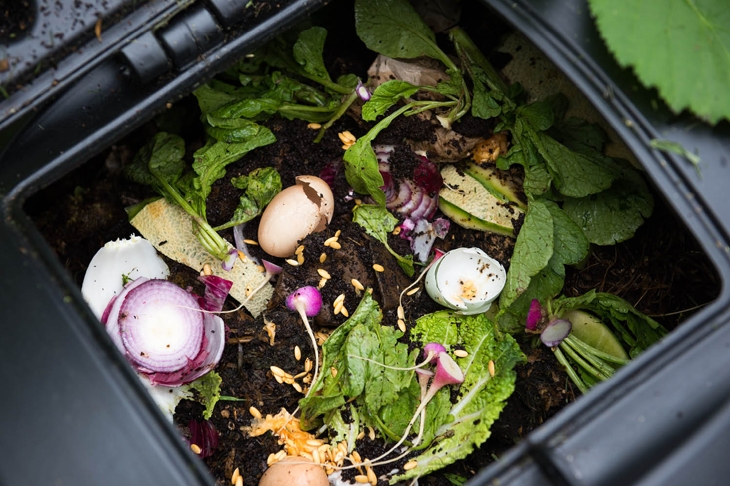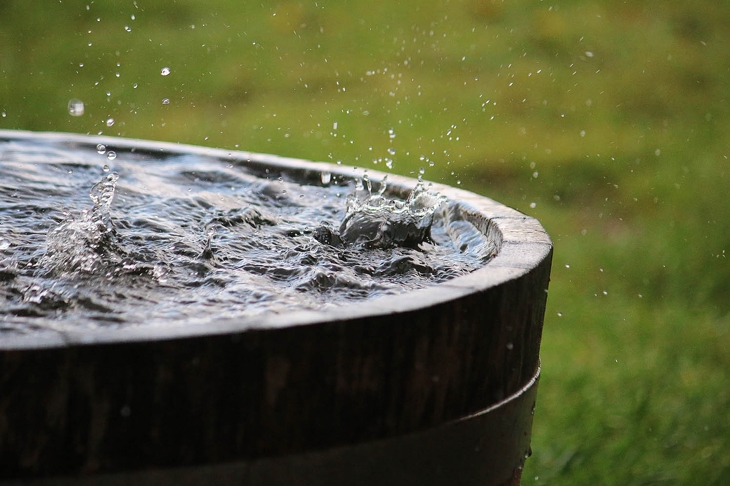Grow Your Sustainable and Organic Gardening Knowledge
We need an enduring approach when it comes to tending our plots.

What are the factors that contribute to a sustainable garden? If you’re avoiding the use of chemical fertilizers and pesticides, that’s a great start. But gardening sustainably goes far beyond this by adopting a whole systems approach. Find out what this means and how you can practice sustainability.
It seems obvious that gardens would be sustainable. After all they’re teeming with plant life, and what’s green has got to be good, right? Well, maybe...
Sustainability means that, as we meet our needs today, we ensure genertions to come can meet theirs as well. It’s a pretty fundamental and logical ethic for conducting ourselves!
So, how do our gardens measure up? If you’re going organic by avoiding the use of chemical fertilizers and pesticides, that’s certainly a good start. But gardening sustainably goes beyond the avoidance of chemicals, to taking a whole systems approach and being deliberate about choices each step of the way.
Right from the start

Does it really matter where your seeds, bedding plants, or shrubs come from if your plan is to raise them organically once you get them? If they haven’t been adapted to a climate like your own or chosen for diverse traits, they’re not apt to thrive without undue coddling or chemicals. And remember, we’re thinking big picture here. Are huge tracts of sprayed seed stock or a few giant companies entrusted with seed genetics really sustainable sources?
Quick win
Prolific gardening author and columnist Marjorie Harris warns it’s a waste of money to buy cheap plants—quality sources will pay off in the end. But that doesn’t mean you can’t stick to a budget by getting perennial cuttings from a neighbor or attending a local seed swap.
Go long
Save some of your own seeds from year to year and create locally adapted varieties.
Keeping the roots in good health

Both literally and figuratively, soil is at the root of plant wellness. Two strategies are key here:
- Disturb the ground as little as possible so as not to damage the intricate microbiology.
- Keep it protected with mulch or cover crops.
Quick win
Cover bare earth with a mulch of leaves, weed-free straw, wood chips, or herbicide-free grass clippings. A living mulch like clover makes a good ground cover in pathways or between plants; plus, it releases nitrogen when you trim it down. Or try sowing a cover crop like ryegrass, field peas, or buckwheat in the fall.
Go long
Invest in hardy perennial plants, like berry shrubs and asparagus, which require no annual soil disturbance.
The right garden nutrients

Plants require nutrients, of course, and each season they pull these out of the soil to feed their new growth and fruit. A healthy ecosystem endlessly cycles these nutrients through animal droppings, decaying plant matter, and soil biology.
By contrast, in our gardens we lose much of that fertility by shipping it off in our green bins or flushing it down the toilet once it passes through us. If we have sustainability in mind, we’ll look for ways to hold more of those nutrients on site and replenish the soil naturally.
Quick win
Make your own compost, sending only unwanted organics like meat bones or pet litter to the municipal facility. You get quality control and avoid needlessly trucking fertility off your property.
Go long
If your local bylaws allow, consider incorporating small animals like chickens or rabbits into your system. Their manure, when properly handled, becomes rich plant fertilizer.
Waste no water

Water is both essential and precious, so how do we ensure there will always be enough to go around? Choosing well-adapted plants, enriching the soil so it can hold more water, and mulching to reduce moisture loss are all good places to start.
Harris advises us to “use water really carefully,” with hand-watering being the surest way to do this. Harvesting rainwater makes use of a freely available resource and puts less strain on limited municipal water supplies and infrastructure.
Quick win
Install a rainwater capture system. Keep it small and simple or go big by tailoring it to your rainfall potential and needs (try the tools at harvestingrainwater.com) or having it professionally installed.
Go long
Plant along the contour lines of your site (lines formed by following a single elevation across your property) so your plantings will passively catch and retain water as it flows from higher to lower elevations.
Plant a variety of species

If our aim is a garden that can continue to fill our needs without depleting our common resources, it really needs to maintain its own balance to some degree just like a healthy ecosystem.
Encouraging a diversity of species—plant, insect, microbe, etc.—on our site is just the way to do this. Including plenty of perennial and native plants in the mix also makes for a hardier community since, as Harris writes, “A garden with nothing but annuals is not sustainable, nor is a garden with only exotics.”
Quick win
Plant flowers such as Phacelia, chives, and Angelica to attract pollinators and beneficials, and apply mulch to keep the soil microbes happy while providing habitat for spiders (voracious insect predators).
Go long
If local bylaws allow, consider beekeeping for increased pollination in your garden and neighborhood (plus the reward of sweet honey!).
Rethinking your garden

Once you adopt the mindset of sustainability there’s really no limit to what you might rethink. For instance, should a trip to the garden center factor into the overall sustainability of your garden? Sure, why not?
If you’re able to put a basket on your bike and cycle to your destination instead of driving, so much the better. You’ll have gotten fresh air and exercise, shopped local, produced zero emissions, and maybe bumped into a neighbor along the way. That’s a garden practice I think we’d all be happy to sustain!
Pro tips for sustainable gardening from Marjorie Harris

Do
- Accept your site and work with what you’ve got (soil type, for instance).
Don’t
- Use peat moss—it’s sterile (contributes nothing to soil life) and non-renewable.
- Use a leaf blower—it blasts away your good topsoil, compost, and mulch (while burning gasoline).
Stock the shed

Look for the following supplies for your sustainable garden.
Open-pollinated seeds: These include many heirloom varieties and will “breed true,” meaning the seeds can be saved from year to year.
Fertilizer: Naturally derived sources are useful, like fish or seaweed fertilizer, worm castings, bone and blood meal, or well-rotted manure from a clean local source.
Materials for bat and mason bee boxes: Build from a kit or scrap lumber to provide habitat for these beneficial species.
Support your plants

Plant supports: These can include natural materials that are biodegradable, such as bamboo stakes and hemp or cotton twine; salvaged items, like shoelaces or an old gate; or materials built to last, like a wrought iron trellis.
Pest controls: Start with a cloth row cover as a physical barrier; benign caterpillar pesticide Btk (Bacillus thuringiensis kurstaki); or a spray bottle for targeting pest outbreaks with homemade soap solutions.
Hand tools

The metal in garden tools is non-renewable and requires mining, so rather than picking up cheap ones that will bend, break, and be discarded, invest instead in a small number of well-made hand implements—bypass pruners, trowel or hori hori knife, long-handled weeder, rake, and spade.





